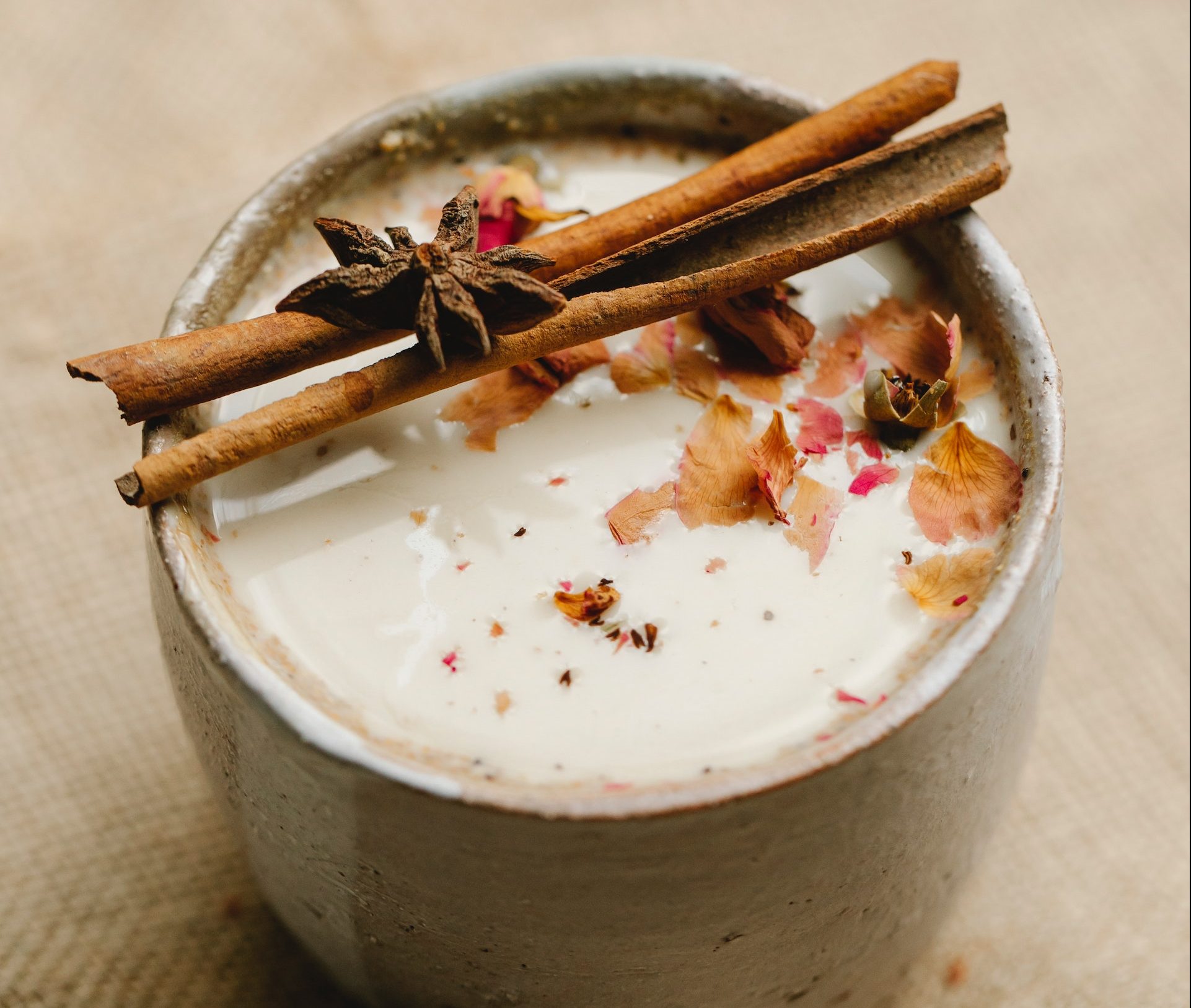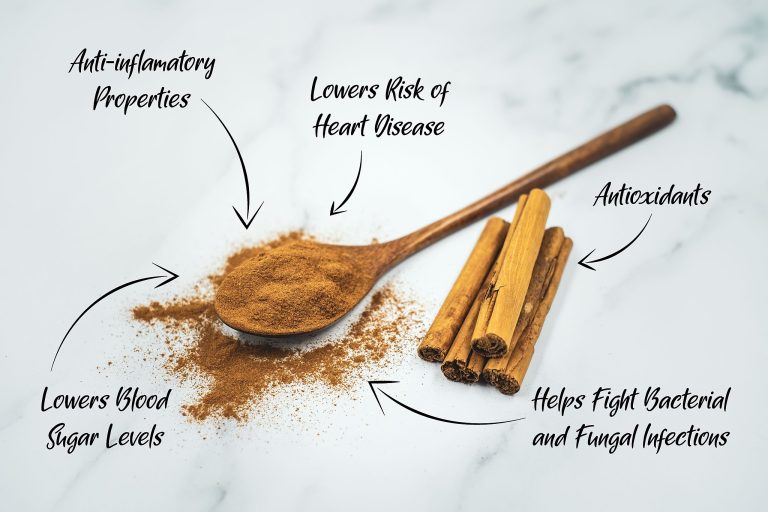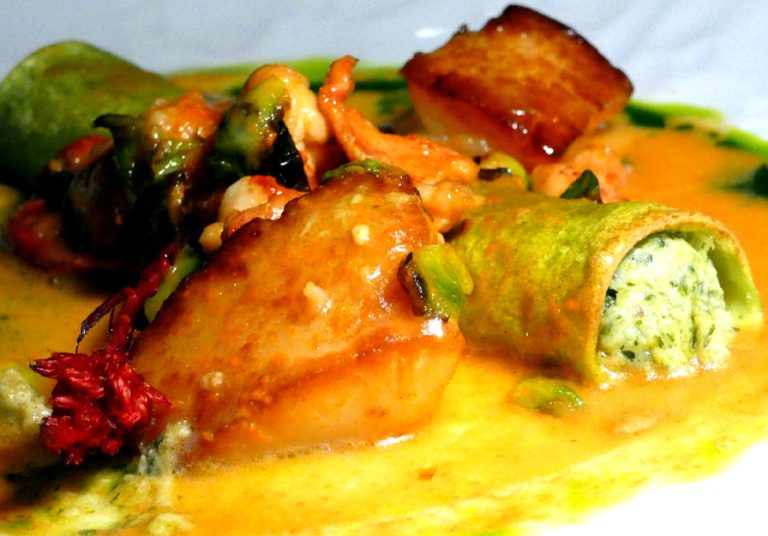Ceylon cinnamon, a mildly aromatic spice with earthy tones, is gaining popular recognition for its many health benefits. Unlike the more commonly used Cassia cinnamon, Ceylon is harvested from the Cinnamomum zeylanicum plant, and offers unique medicinal properties not found in other cinnamons.
Highly valued for its distinctive aroma and robust flavor, cinnamon is one of the most widely used spices around the world. Found in nearly everyone’s spice cabinet, this dried bark lends its sweet and spicy flavor to a wide variety of international cuisines, including Turkish, Indian, Portuguese, Italian, and Persian. It is commonly used in baked goods, sweet and spicy beverages, soups, stews and curries.
There are two major varieties of cinnamon found in the spice market: Cassia and Ceylon, with a number of Cassia subspecies from different regions being widely available.
Cassia cinnamon:
- Cinnamomum Cassia: Also known as Cinnamomum Aromaticum or Chinese Cassia, it is believed to be native to China. Dark brown with a reddish hint, this inexpensive cinnamon can be found in any grocery store in the United States. It has a refreshing, mildly sweet flavor and its stick form is very sturdy.
- Cinnamomum Loureiroi: Known as Vietnamese cinnamon or Saigon cinnamon because it is widely cultivated in Vietnam, this cinnamon is slightly sweeter and has a more robust flavor than any other cassia cinnamon.
- Cinnamomum Burmannii: Also known as Indonesian cinnamon, Padang cassia, Batavia cassia, or Korintje, this cinnamon has its roots in Southeast Asia. Even less expensive than Chinese cassia, it is commonly sold as the ground spice widely available in US groceries.

Ceylon cinnamon:
True cinnamon, (Cinnamomum Verum, or Cinnamomum Zeylanicum,) is native to the small, island country of Sri Lanka, located in the Indian Ocean. Sri Lanka was initially known as Ceylon, so its native cinnamon inherited that title. The many species and subspecies of Ceylon cinnamon are also grown in Madagascar and southern India.
Ceylon cinnamon is the inner bark of an evergreen tree in the Laurieraceae family. At two years old, the tree is cut back, or coppiced, to stimulate the growth of multiple shoots to be harvested the following year. The young shoots are cut and stripped of their bark, which naturally curls into “quills” as it dries in the sun.
Success
You are now signed up for our newsletter
Success
Check your email to complete sign up
This rare and expensive spice is a lighter brown than its Cassia cousins, with a more delicate texture. Its many-layered coils can be easily broken by hand.
Ceylon cinnamon is superior
While Ceylon and cassia are used interchangeably as the same ingredient, they differ in many ways. Cassia cinnamon is sometimes called “fake cinnamon” because of its high coumarin content, which can cause liver and kidney dysfunction and reduce blood density. Ceylon cinnamon is believed to be safe and highly nutritious. It has only a tiny fraction of the coumarin levels found in other cinnamons.

Powerful health benefits of Ceylon cinnamon
As a culinary spice, Ceylon cinnamon is not only rich in aroma and flavor, but also very rich in medicinal properties. The Indian healing system Ayurveda uses this herb to treat many ailments. The minerals, antioxidants, and vitamins found in Ceylon cinnamon provide a variety of health benefits.
Reduces cancerous growths: Cinnamaldehyde, a compound found in Ceylon cinnamon, effectively prevents tumor growth and protects DNA. The antioxidant and anti-inflammatory properties of this herb have been shown to reduce chronic conditions such as neurodegenerative diseases, cancer, heart disease, and obesity.
Lower Blood Sugar levels: Ceylon cinnamon has been used to complement the treatment of diabetes. It increases insulin production, thereby helping to lower blood sugar levels in the body. It also regulates blood pressure to promote heart health.
Vision: Provitamins, which later convert to Vitamin A, play an essential role in maintaining eye health.
Weight Loss: Cinnamaldehyde, found in Ceylon cinnamon, demonstrated in a clinical study that it promotes the expression of fat-burning genes and the production of fat-burning proteins. A tea made of this spice has the potential to facilitate weight loss, while its many nutrients assist in detoxifying the body.
Preparation:
- Bring a small pot of water to a boil and add a few pieces of ceylon cinnamon.
- Simmer, covered, for 7 minutes.
- Strain the solution and add lemon if desired.
- Enjoy the tea daily on an empty stomach
Haircare: Cinnamon oil fights against Malassezia, a fungus that causes dandruff. It strengthens the hair roots and maintains the blood circulation in the scalp. Add a few drops of essential oil to your regular conditioner.
Skincare: Due to its antibacterial and antibiotic properties, Ceylon cinnamon helps alleviate rashes, infections, and allergies affecting the skin. Applying cinnamon essential oil directly to the infected area reduces redness, pain, swelling, and inflammation. A paste of honey and ground cinnamon can be applied to treat skin allergies, acne, wrinkles, and eczema.
Preparation:
- Mix a few spoonfuls of honey and ceylon cinnamon powder.
- Gently warm it in a microwave or instant pot
- Distribute the mask evenly over the face and leave it on for 10 minutes.
- Rinse and relish in your new radiance.
- For best results, repeat once or twice a week.
Ceylon cinnamon is a treasure trove of nutrients and helps the body in many ways. The essential oil is said to relieve menstrual cramps and muscle pain, lower cholesterol and mental disorders, and aid digestion. The tannin compounds found in Ceylon cinnamon act as an astringent that aids in wound healing.
Additionally, Ceylon cinnamon is used as a preservative in natural foods. The antioxidant and antibacterial properties of the compound cinnamaldehyde are known to inhibit the growth of fungi and bacteria.
Ceylon cinnamon products
Like most cinnamons, Ceylon cinnamon is available in a number of different forms.
Sticks, or quills are the natural form that the extracted inner bark takes as it dries. obtained after cutting the stems of cinnamon trees. This bark can also be sold as broken sticks. Cinnamon powder is the ground form of these sticks.
Broken bits of unpeeled outer bark are called cinnamon chips, often used to repel insects or in pickling spice.
Cinnamon essential oils are obtained from both the bark and the leaf. Leaf oil contains antiseptic and anti-inflammatory eugenol, while bark oil contains the aromatic cinnamaldehyde. Both can be used in mouthwashes, toothpaste, cleansers, soaps, cosmetics, body lotions, and perfumes.














